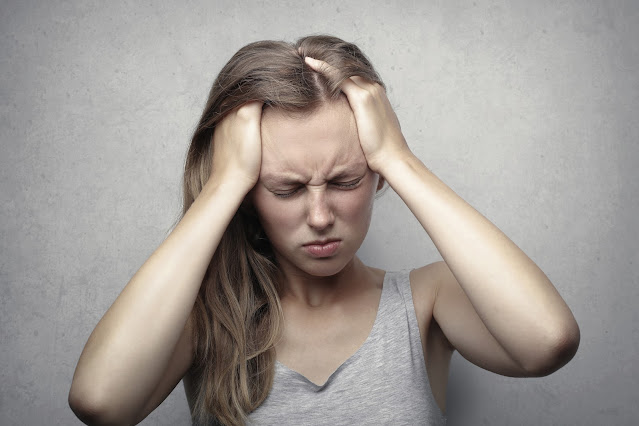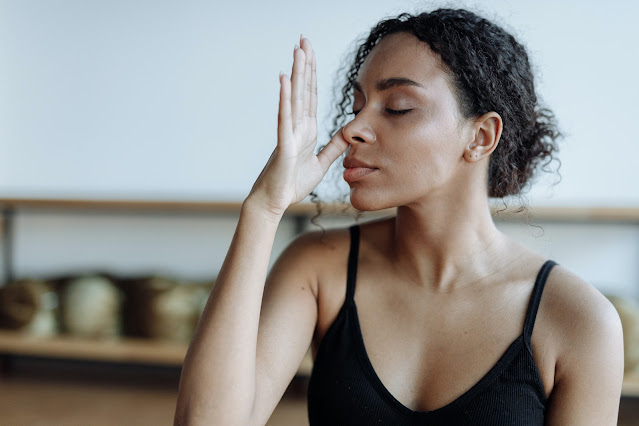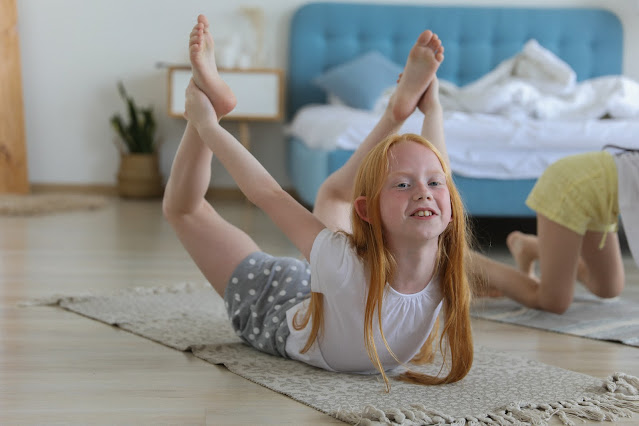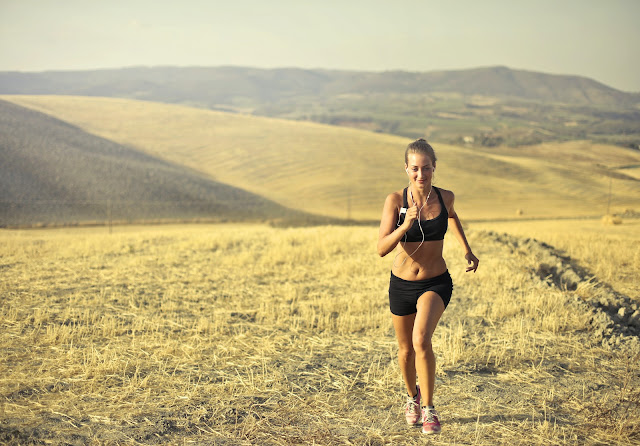Yoga and Meditation for Good Health | healthy lifestyle
Yoga and Meditation for Good Health
Yoga and meditation have been practiced for centuries, and they are known to promote physical and mental well-being. The benefits of these practices are numerous and varied, ranging from reduced stress and anxiety to improved flexibility and concentration. In this article, we will explore the benefits of yoga and meditation for good health, as well as how to practice these techniques safely and effectively.
I. Introduction
Benefits of Yoga and Meditation for Good Health
A. Reduces Stress
One of the most significant benefits of yoga and meditation is their ability to reduce stress levels. Both practices encourage relaxation and deep breathing, which can calm the mind and lower cortisol levels in the body. This can lead to a decrease in symptoms of anxiety and depression, as well as improved overall mood and emotional well-being.
B. Increases Flexibility
Yoga is an excellent way to increase flexibility and mobility in the body. The various poses and stretches help to elongate the muscles and improve joint function. Over time, practicing yoga regularly can lead to greater range of motion and a reduced risk of injury.
C. Strengthens Muscles and Bones
In addition to increasing flexibility, yoga can also help to strengthen muscles and bones. Many yoga poses require the use of body weight as resistance, which can lead to improved muscle tone and density. This can also help to improve posture and balance, reducing the risk of falls and injuries.
D. Boosts Immune System
Meditation has been shown to boost the immune system by reducing inflammation and increasing the activity of immune cells. Regular meditation practice can also help to improve sleep quality, which is crucial for overall immune function.
E. Reduces Anxiety and Depression
Meditation has been shown to be an effective treatment for anxiety and depression. It can help to reduce symptoms of both conditions by promoting a sense of calm and relaxation in the mind and body.
F. Improves Sleep Quality
Practice yoga poses before bed:- Gentle yoga poses such as child's pose, forward fold, and legs-up-the-wall pose can help relax the body and prepare it for sleep.
Try a restorative yoga class:- Restorative yoga is a gentle practice that involves holding poses for several minutes with the support of props. It can help calm the mind and relax the body.
Practice meditation before bed:- Meditation can help calm the mind and reduce stress levels, making it easier to fall asleep. Try a guided meditation or simply focus on your breath for a few minutes before bed.
Use yoga nidra:- Yoga nidra is a form of guided relaxation that can help induce sleep. It involves lying down and following a guided meditation that takes you through different stages of relaxation.
Incorporate pranayama:- Pranayama, or breathing exercises, can help calm the mind and reduce stress levels. Try a simple breathing exercise such as deep belly breathing or alternate nostril breathing before bed.
G. Lowers Blood Pressure and Cholesterol Levels
Yoga and meditation have been found to have numerous health benefits, including lowering blood pressure and cholesterol levels. Both practices help to reduce stress, a key factor in the development of high blood pressure and high cholesterol. Additionally, certain yoga poses, such as backbends and inversions, can help improve circulation and strengthen the heart muscle, leading to better heart health. Practicing yoga and meditation also encourages healthy habits like eating a healthy diet and exercising regularly, which can further contribute to lower blood pressure and cholesterol levels. These practices can also help reduce inflammation in the body, which is linked to high blood pressure and cholesterol.
H. Reduces Chronic Pain
Yoga and meditation have been found to have a positive impact on chronic pain management. By practicing yoga regularly, individuals can improve flexibility, strengthen muscles and reduce tension in the body. This can lead to decreased pain and discomfort associated with chronic conditions like arthritis, fibromyalgia and back pain. Meditation can also help reduce pain by increasing the body's production of endorphins, which are natural painkillers. By incorporating mindfulness techniques into their practice, individuals can learn to manage their pain and decrease its impact on their daily lives. This approach offers a holistic way to manage chronic pain and improve overall physical and mental wellbeing.
II. Enhances Concentration and Focus
Yoga and meditation can enhance concentration and focus, helping individuals improve their productivity and mental clarity. The practice of yoga involves physical movements and postures that require focus and attention to detail, which can improve cognitive function and enhance overall concentration. Meditation, on the other hand, helps to clear the mind of distractions and negative thoughts, enabling individuals to focus on the present moment. Regular practice of both yoga and meditation can lead to an increased ability to stay focused, process information more efficiently and make better decisions. This can be beneficial for individuals in both their personal and professional lives, leading to increased productivity, improved mental clarity, and a sense of calm and balance.
A. Promotes Overall Well-being
Yoga and meditation are holistic practices that can promote overall well-being by improving physical, mental and emotional health. The physical benefits of yoga include increased flexibility, improved strength and balance, and better cardiovascular health. The practice of meditation can reduce stress and anxiety, improve sleep quality, and boost immunity. In addition to these physical benefits, both practices can also have a positive impact on mental and emotional health by increasing self-awareness, promoting mindfulness, and fostering a sense of inner peace and calm. By incorporating yoga and meditation into their daily routine, individuals can experience improved overall well-being, greater resilience to stress, and a more positive outlook on life. This approach to wellness offers a holistic and sustainable way to improve overall health and quality of life.
III. How to Practice Yoga and Meditation
To practice yoga and meditation, find a quiet and comfortable space, wear comfortable clothing, and choose a yoga or meditation style that suits your needs. You can follow guided classes online or in-person, or create your own practice by combining different postures and techniques. Consistency is key to see the benefits, so aim to practice regularly and be patient with yourself as you develop your skills.
A. Yoga Poses for Beginners
Yoga is a great way to improve physical fitness, reduce stress and enhance overall well-being. For beginners, there are a variety of poses that are easy to learn and provide a gentle introduction to the practice. Some popular poses for beginners include downward facing dog, child's pose, tree pose, and mountain pose. These poses can help improve flexibility, build strength, and increase mindfulness. To get started, find a quiet and comfortable space, wear comfortable clothing, and follow along with guided videos or attend a beginner's yoga class. Remember to take things slow, listen to your body and enjoy the journey of discovering the benefits of yoga.
B. Tips for Practicing Meditation
Meditation is a powerful tool for reducing stress, improving focus, and enhancing overall well-being. To get the most out of your meditation practice, there are a few tips to keep in mind. First, find a quiet and comfortable space where you can sit undisturbed for a few minutes. Second, choose a technique that resonates with you, such as focused breathing or visualization. Third, start with short sessions and gradually increase the length of your practice as you become more comfortable. Fourth, be patient and compassionate with yourself if you find it difficult to quiet your mind. Finally, try to make meditation a regular part of your daily routine to reap the maximum benefits. By incorporating these tips into your meditation practice, you can experience greater calm, focus, and inner peace.
C. Importance of Breathing Techniques
Breathing techniques, also known as pranayama, are an essential component of yoga and meditation practices. These techniques involve the conscious control and regulation of one's breath, which has a significant impact on physical, mental, and emotional well-being.
Yoga and meditation emphasize the importance of deep, diaphragmatic breathing, which involves using the full capacity of the lungs to take in oxygen and release carbon dioxide. This type of breathing is associated with relaxation, stress reduction, and improved concentration.
Breathing techniques can also help to improve respiratory function, increase lung capacity, and lower blood pressure. They can enhance the body's immune response, increase energy levels, and promote overall health and well-being.
In addition to physical benefits, breathing techniques are also beneficial for mental and emotional health. Deep breathing can help to reduce anxiety, depression, and stress by activating the parasympathetic nervous system, which promotes relaxation and calmness.
Through regular practice of breathing techniques, individuals can cultivate greater self-awareness, mindfulness, and emotional regulation. These practices can help to improve sleep quality, boost mood, and enhance overall quality of life.
D. Recommended Time and Place for Practice
Finding the right time and place for your yoga and meditation practice can significantly enhance your experience and help you achieve your desired goals. Ideally, early morning is considered the best time for practice as your mind is fresh, and the body is energized. It's essential to choose a quiet, clean, and peaceful place for your practice that's well-ventilated, has natural light, and free from distractions. Using a good quality yoga mat, wearing comfortable and loose-fitting clothing, and using a meditation cushion, if necessary, can all help you feel comfortable and supported during your practice. Remember, consistency is key, and even a few minutes of practice each day can help you develop a deeper connection to your body and mind, leading to greater overall well-being.
IV. Precautions and Safety Measures
A. Consultation with Doctor
Consulting with a doctor before starting a yoga and meditation practice is essential, especially if you have any underlying health conditions or injuries. Your doctor can advise you on which types of yoga and meditation practices are safe for you and which ones you should avoid. They can also help you develop a plan that is appropriate for your fitness level and health needs. Additionally, if you are taking any medications or undergoing any medical treatments, your doctor can advise you on how to adjust your practice accordingly. It's essential to listen to your body during your practice and not push yourself beyond your limits. By working closely with your doctor, you can ensure that your yoga and meditation practice supports your overall health and well-being.
B. Practice with a Certified Instructor
Practicing yoga and meditation with a certified instructor can be incredibly beneficial for both beginners and experienced practitioners. A qualified instructor can help you develop a deeper understanding of the practice and can provide valuable guidance and support as you progress. They can also help you learn proper alignment and technique, which can help prevent injuries and improve the effectiveness of your practice. Additionally, an experienced instructor can provide modifications and adjustments that are tailored to your unique needs and abilities. When choosing an instructor, it's important to look for someone who has completed a certified training program and has experience working with individuals with your specific needs and goals. A good instructor should also be compassionate, patient, and non-judgmental, creating a safe and supportive environment for you to explore your practice. Ultimately, practicing with a certified instructor can help you achieve optimal results from your yoga and meditation practice and support your overall health and well-being.
C. Listen to Your Body
Listening to your body is an essential aspect of yoga and meditation practice. Your body is constantly sending you signals and feedback, and it's important to pay attention to these signals and respond appropriately. This means being aware of your body's limitations and not pushing yourself beyond your limits. If you experience pain or discomfort during your practice, it's important to adjust your posture or take a break. Similarly, if you feel fatigued or run down, it may be a sign that you need to take a break or adjust the intensity of your practice. By listening to your body and responding with compassion and care, you can develop a deeper connection to yourself and your practice. Remember, yoga and meditation are not about pushing yourself to the limit, but rather about finding balance, harmony, and peace within yourself.
D. Avoid Overexertion
In today's fast-paced world, we often find ourselves overwhelmed and stressed out by the demands of work, family, and social commitments. This can lead to overexertion, which can have negative consequences for our physical and mental health. Yoga and meditation are powerful tools that can help us to avoid overexertion by promoting relaxation, reducing stress and anxiety, and increasing our overall sense of well-being. Yoga involves a series of postures, stretches and breathing exercises that help to release tension and promote flexibility, while meditation involves focusing the mind on a particular object, thought, or activity in order to achieve a state of calm and relaxation. By incorporating yoga and meditation into our daily routine, we can reduce the risk of overexertion and improve our physical and mental health in the process.
E. Proper Clothing and Equipment
When it comes to practicing yoga and meditation, it's important to wear the right clothing and have the right equipment. Comfortable, breathable clothing that allows for a full range of movement is essential for yoga, while loose-fitting clothing that doesn't restrict your breathing is ideal for meditation. Additionally, investing in a good quality yoga mat can help to improve stability and reduce the risk of injury during yoga poses, while using a meditation cushion or stool can help to maintain a comfortable and upright posture during meditation. Other useful equipment might include blankets or bolsters to support your body during yoga poses, and props like blocks and straps to help with alignment and flexibility. By investing in proper clothing and equipment, you can help to enhance your yoga and meditation practice and reap the many benefits for your physical and mental well-being.
V. Incorporating Yoga and Meditation into Daily Life
A. Morning Routine
Starting the day with a morning routine that includes yoga and meditation can have a significant impact on our overall health and well-being. By dedicating just a few minutes each morning to gentle yoga stretches and a short meditation practice, we can set a positive tone for the day ahead and help to reduce stress and anxiety. Incorporating yoga and meditation into your morning routine can also help to increase your energy levels, improve your focus and concentration, and promote a sense of inner calm and balance. Whether you're a seasoned practitioner or just starting out, committing to a regular morning yoga and meditation practice can help you to cultivate a healthier, more balanced and fulfilling life.
B. Before Bedtime
Ending the day with a yoga and meditation practice can be a great way to unwind and prepare for a restful night's sleep. Practicing yoga before bedtime can help to release tension in the body and calm the mind, while meditation can help to reduce anxiety and promote relaxation. Incorporating these practices into your bedtime routine can help to improve the quality of your sleep, reduce insomnia, and promote feelings of well-being. Additionally, taking the time to disconnect from technology and other distractions before bed can help to improve your overall sleep hygiene and promote a more restful and rejuvenating night's sleep. By incorporating yoga and meditation into your bedtime routine, you can help to improve your physical and mental health and wake up feeling refreshed and energized.
C. During Work Breaks
Incorporating yoga and meditation into your work breaks can be a great way to combat stress and improve your overall well-being. Practicing yoga stretches or meditation for just a few minutes during your work breaks can help to clear your mind, reduce tension in the body, and improve your focus and concentration. Additionally, taking regular breaks to practice yoga or meditation can help to reduce fatigue, increase energy levels, and promote feelings of calm and relaxation throughout the day. Even if you only have a few minutes to spare, taking the time to connect with your breath and move your body can have a profound impact on your physical and mental health. By incorporating yoga and meditation into your work breaks, you can cultivate a healthier, more balanced and fulfilling work life.
D. Family or Group Practice
Practicing yoga and meditation with family or in a group can be a wonderful way to strengthen bonds and promote well-being. Group practice can help to foster a sense of community and support, as well as providing motivation and accountability to stick to a regular practice. Practicing yoga and meditation with family members can also be a great way to spend quality time together and deepen relationships. Group practice can be adapted to suit the needs and abilities of all participants, and can include a range of postures and meditation techniques. By practicing yoga and meditation together as a family or group, you can cultivate a healthier, more connected and fulfilling life.
E. Online Resources and Apps
In today's digital age, there are countless online resources and apps available to help you incorporate yoga and meditation into your daily life. From online yoga classes and guided meditation apps, to YouTube channels and blogs, there are a variety of resources available to suit all levels and preferences. Many apps and online resources offer guided practices that can help to deepen your practice and provide inspiration, motivation and accountability to stick to a regular routine. Additionally, online resources can be accessed from anywhere, making it easier to maintain your practice while traveling or on-the-go. By utilizing online resources and apps, you can cultivate a regular yoga and meditation practice, no matter where you are or how busy your schedule may be.
VI. Conclusion
In conclusion, incorporating yoga and meditation into your daily routine can have a profound impact on your physical, mental and emotional well-being. Whether you prefer to practice alone or in a group, in the morning or before bedtime, during work breaks or using online resources and apps, there are countless ways to incorporate these practices into your daily life. With regular practice, yoga and meditation can help to reduce stress and anxiety, improve focus and concentration, increase energy levels, promote restful sleep and foster a greater sense of inner peace and balance. By committing to a regular yoga and meditation practice, you can cultivate a healthier, more balanced and fulfilling life.
FAQs:
1. Can I practice yoga and meditation if I have a health condition?
Ans:- Consult with a healthcare provider before practicing yoga or meditation if you have a health condition. Modifications may be needed to ensure safe practice.
2. How long should I practice yoga and meditation for optimal results?
Ans:- The optimal duration of yoga and meditation practice may vary depending on individual needs and goals. However, regular practice for at least 20-30 minutes per day can be beneficial for most people.
3. Do I need any special equipment to practice yoga and meditation?
Ans:- You don't necessarily need any special equipment to practice yoga and meditation. Comfortable clothing and a yoga mat can be helpful, but modifications can be made to accommodate different levels of flexibility and mobility.
4. Is it okay to practice yoga and meditation on an empty stomach?
Ans:-It is generally recommended to practice yoga and meditation on an empty or light stomach to avoid discomfort and promote better digestion. However, it is important to listen to your body and adjust your practice accordingly.
5. Can children practice yoga and meditation?
Ans:- Yes, children can practice yoga and meditation, but they should be supervised by a qualified instructor and appropriate modifications made for their age and abilities.




























Post a Comment